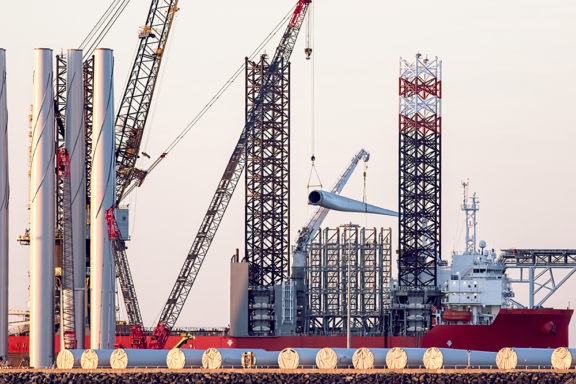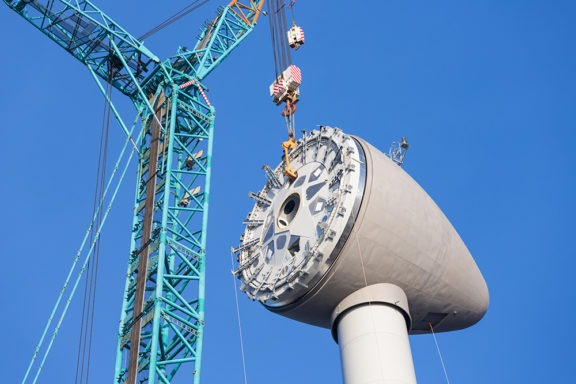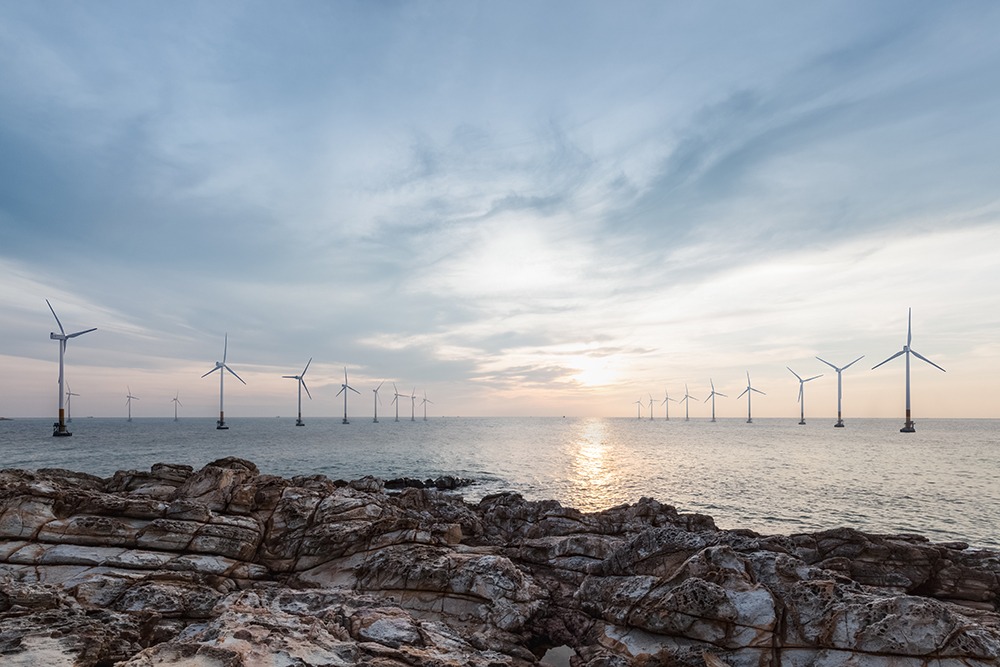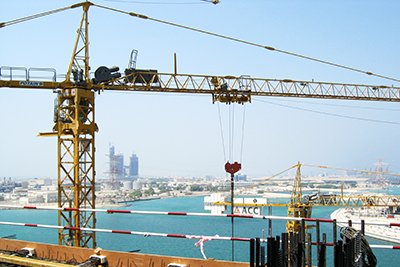People like to talk about starting projects off “on the right foot.” For offshore wind projects, we say “Start off with the right foundation.” A significant part of the early planning process, offshore wind turbine support structures and foundations can account for one-quarter to one-third of an offshore wind project’s capital cost. That’s not surprising when considering all of the planning, design, logistical, and operational variables that allow the turbine to do its job across varying seabed and environmental conditions without impacting the marine environment and ecosystem. Thoughtful geotechnical engineering is paramount to the project’s success from the very beginning.
Offshore wind planning must start with a deep understanding of what lies beneath
Before choosing the type of offshore wind turbine foundation for your project, it’s necessary to understand the soil conditions of the seabed in the lease area. Frontier areas like New England present a challenging, complex geology due to the influence of glaciers and sea-level change. A desktop study of geologic history can provide the big picture; however, it’s important to enlist geotechnical engineers who can dive deeper into the data and characterize seabed sediments through offshore site investigations.

These investigations start with defining the different soil layers of the seabed through in situ testing and soil collection. The soil samples are tested in a geotechnical laboratory to determine the strength and stiffness properties of the seabed sediments. These engineering properties guide design and analysis of the day-to-day operational response of the turbine as well as its ultimate capacity in a large storm event. The interaction between the structure and the seabed can be highly sensitive to structural dynamics and the environmental loading from wind and waves. Smaller loads over the lifetime of the structure are critical for fatigue and larger loads from storms govern the serviceability and capacity of the foundation.
The scale of offshore wind farms is growing globally – from hundreds of square miles to thousands of square miles – making it extremely difficult to characterize the soil conditions of the seabed across such large areas. The need for large-scale seabed characterization has led to a revolution in the industry approach to ground modeling, with advanced methods using machine learning algorithms to predict soil conditions across offshore wind lease areas. Ground models remove the unknowns associated with macro siting (“what if we shifted the wind turbines across the lease area?”) and micro siting (“what soil conditions can we expect for a foundation right here?”).
But wait! There’s more to consider before determining the right turbine foundation
The right foundation selection depends not only on seabed conditions but also on environmental, supply chain, and water depth considerations. For instance, suction buckets are increasingly selected due to their low noise impact on marine mammals during the installation process. Traditional offshore foundation technology (such as piled jackets) are a viable option to developers as these can be easier to procure thanks to the Gulf Coast oil and gas supply chain. The deep waters off the west coast of the U.S. and in the Gulf of Maine make it necessary to use mooring concepts to anchor floating offshore wind turbines.
The growth in wind turbine size is a critical factor as well, with 10 MW units now on order for most projects in the pipeline and indications that 15 MW units on the design table. These larger wind turbines lead to larger foundation design loads and an increased focus on coordination between the structural engineers (who design the offshore wind turbine tower) and the geotechnical engineers (who design the foundation).
How we can build on a strong foundation to solidify offshore wind’s place in the U.S. energy portfolio
Structural instrumentation provides the opportunity to “check” foundation response against the predictions made during design. For offshore wind turbine foundations, tower movement influences foundation performance and vice versa. Monitoring foundation loading and response in conjunction with the response of the offshore wind turbine tower increases our understanding of complex soil-structure interaction concepts, leading to optimizations and innovations in foundation and tower design for future projects.

Informed by structural instrumentation data, digital twin modeling gives engineers a way of providing calibrated estimates of potential future behavior. This enhances the opportunity to extend the service life of existing projects and to get more “bang for the buck” for offshore wind infrastructure investment.
In the U.S., we are leveraging nearly 30 years of European experience to guide our offshore wind development. What will really propel U.S. offshore wind power are experienced geotechnical engineers who understand the varied seabed soil conditions and design for local loading conditions, deeper water depths, and larger turbines. This will provide the information needed to further reduce the levelized energy cost for this burgeoning U.S. industry, and cement the role of offshore wind in diversifying the national energy portfolio.
While offshore wind is new to North America, there are many lessons learned from Europe that can help projects succeed here. That’s why we’re partnering with Norwegian Geotechnical Institute (NGI) to leverage our combined global expertise and local experience to meet our clients’ needs for geotechnical, geoenvironmental, regulatory, construction, and delivery challenges. Here’s how we guide your offshore wind project from design to delivery.
Read more blog posts on offshore wind construction and engineering:
Published: 8/20/2020
- Energy
- Renewable energy
- Foundation design
- Geotechnical instrumentation and monitoring
- Geotechnical engineering
Author

Technical Expert



